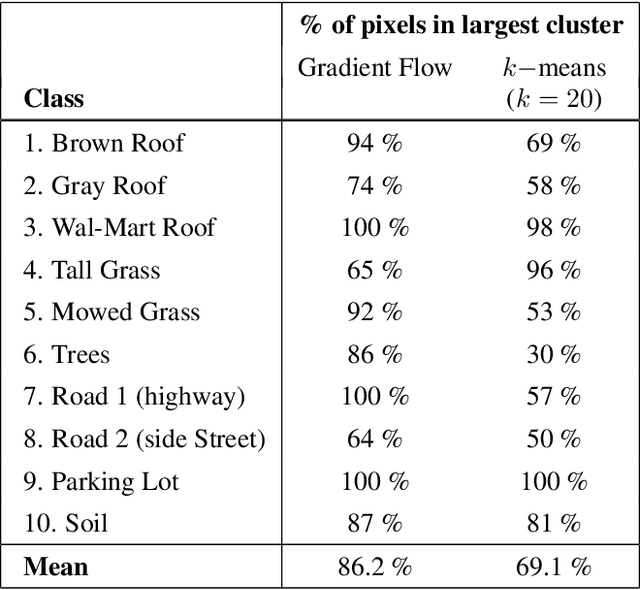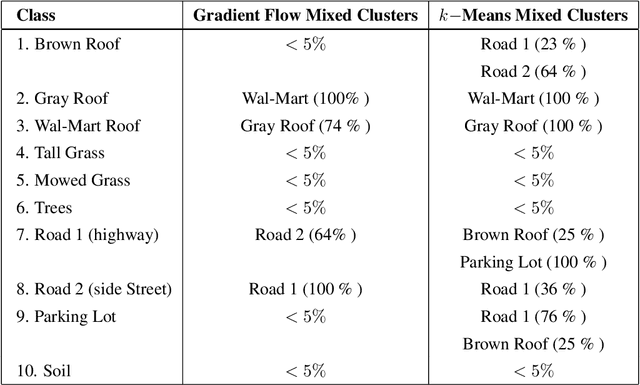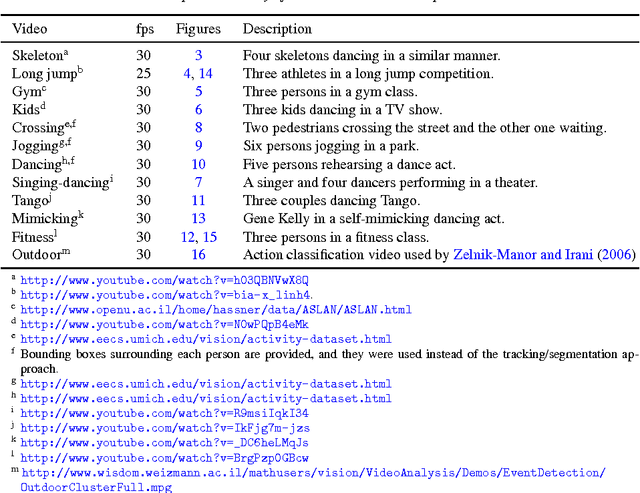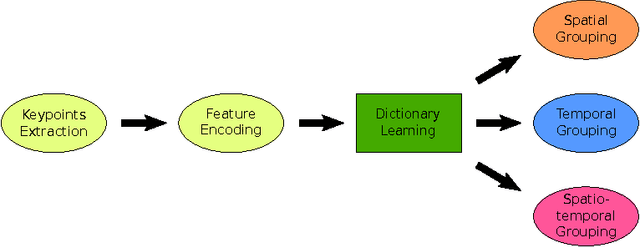Alexey Castrodad
A Dynamical Systems Algorithm for Clustering in Hyperspectral Imagery
Jul 21, 2022



Abstract:In this paper we present a new dynamical systems algorithm for clustering in hyperspectral images. The main idea of the algorithm is that data points are \`pushed\' in the direction of increasing density and groups of pixels that end up in the same dense regions belong to the same class. This is essentially a numerical solution of the differential equation defined by the gradient of the density of data points on the data manifold. The number of classes is automated and the resulting clustering can be extremely accurate. In addition to providing a accurate clustering, this algorithm presents a new tool for understanding hyperspectral data in high dimensions. We evaluate the algorithm on the Urban (Available at www.tec.ary.mil/Hypercube/) scene comparing performance against the k-means algorithm using pre-identified classes of materials as ground truth.
Are You Imitating Me? Unsupervised Sparse Modeling for Group Activity Analysis from a Single Video
Aug 27, 2012



Abstract:A framework for unsupervised group activity analysis from a single video is here presented. Our working hypothesis is that human actions lie on a union of low-dimensional subspaces, and thus can be efficiently modeled as sparse linear combinations of atoms from a learned dictionary representing the action's primitives. Contrary to prior art, and with the primary goal of spatio-temporal action grouping, in this work only one single video segment is available for both unsupervised learning and analysis without any prior training information. After extracting simple features at a single spatio-temporal scale, we learn a dictionary for each individual in the video during each short time lapse. These dictionaries allow us to compare the individuals' actions by producing an affinity matrix which contains sufficient discriminative information about the actions in the scene leading to grouping with simple and efficient tools. With diverse publicly available real videos, we demonstrate the effectiveness of the proposed framework and its robustness to cluttered backgrounds, changes of human appearance, and action variability.
 Add to Chrome
Add to Chrome Add to Firefox
Add to Firefox Add to Edge
Add to Edge